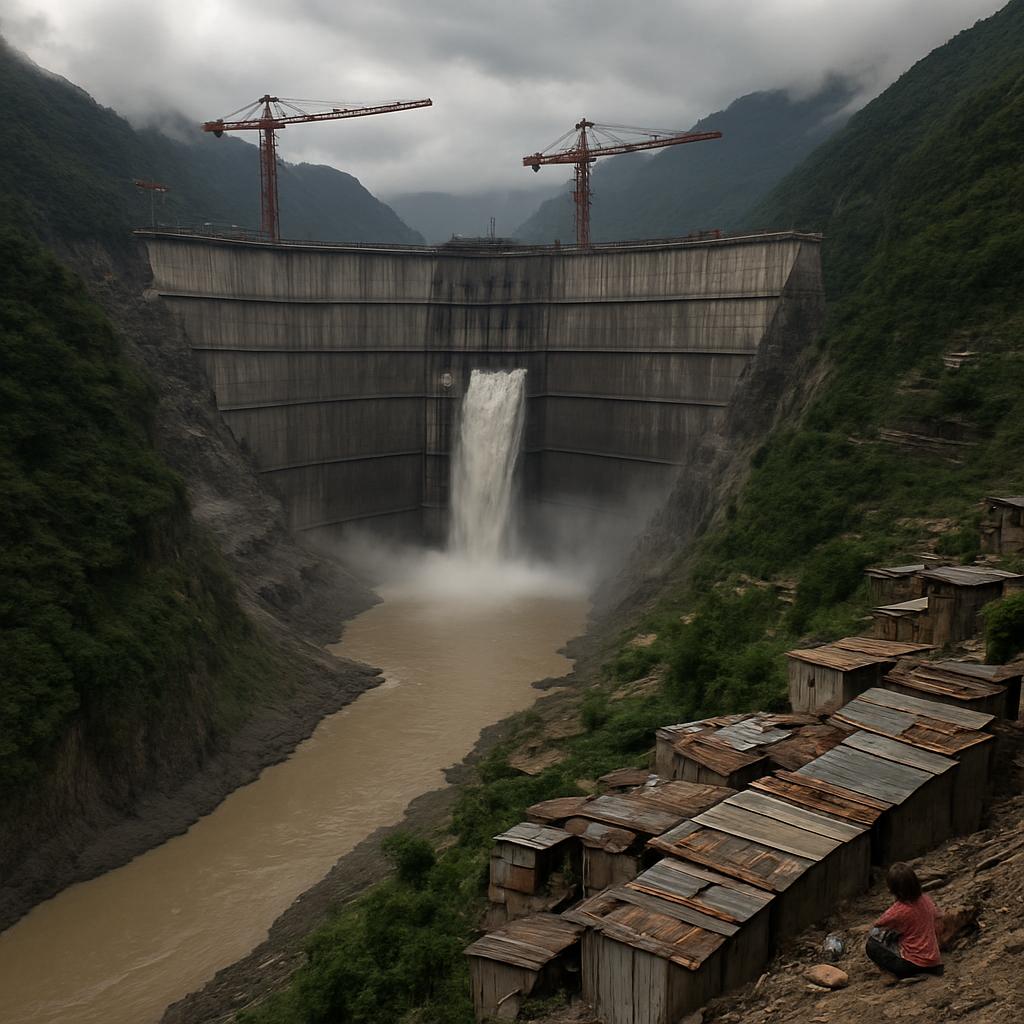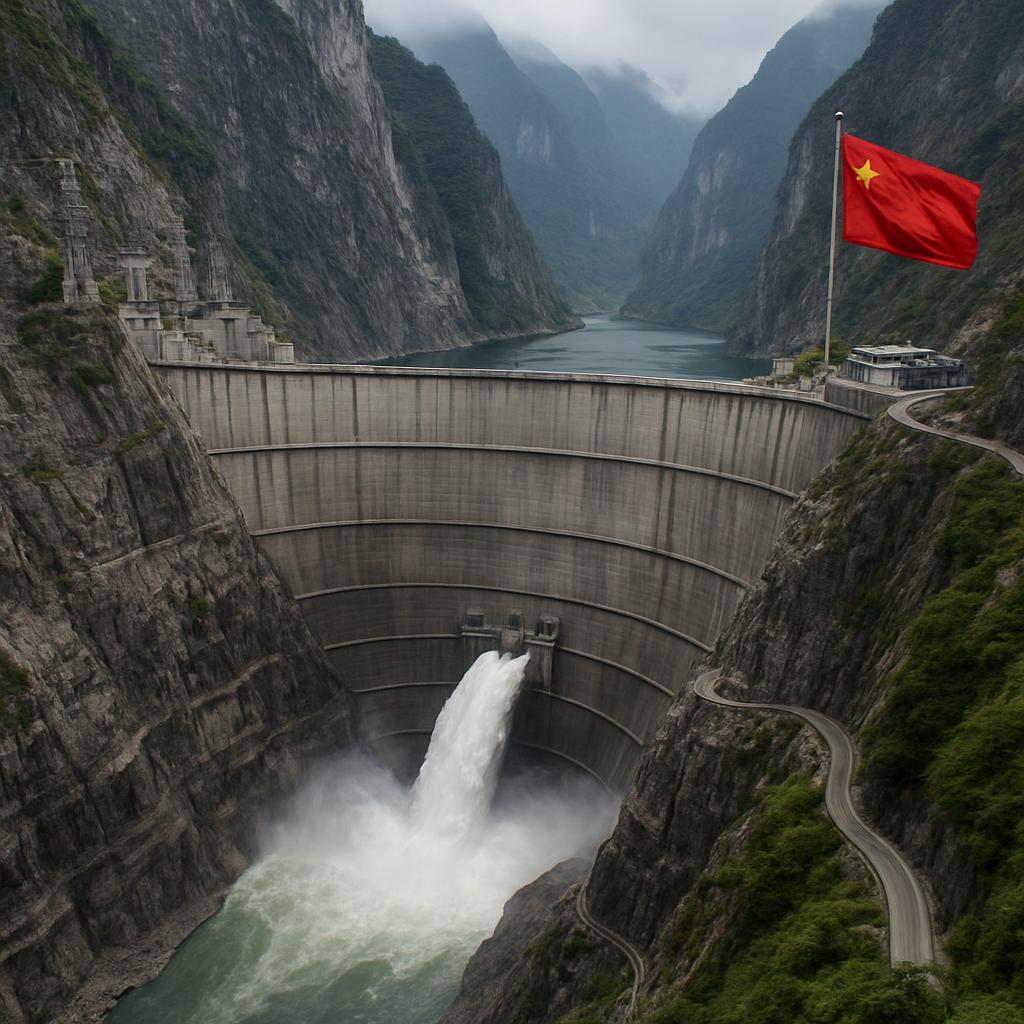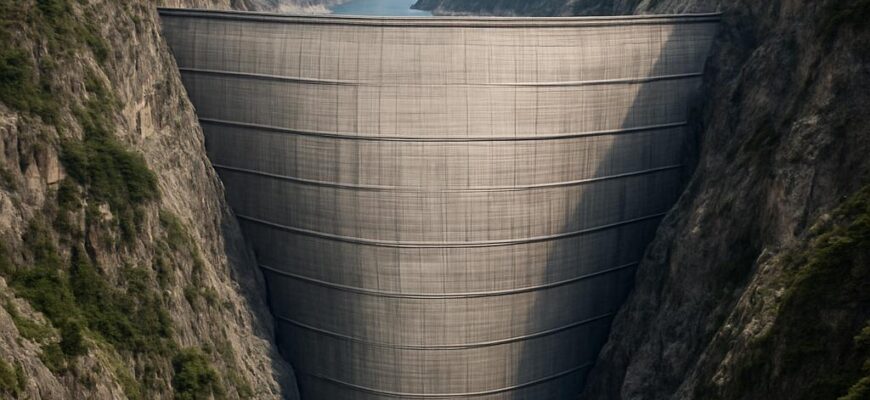News that China has commissioned the world’s tallest dam landed like a thunderclap in engineering circles and environmental forums alike, and for good reason. A structure that claims the global height record draws attention not only for its sheer size but for the technical creativity, policy choices, and human stories that surround it.
This article unpacks what such a project means in practical, social, and geopolitical terms. I’ll walk through the engineering that makes extreme dam heights possible, the trade-offs that come with them, and the questions communities and regulators will be asking in the months and years ahead.
- Where is it and what makes this structure a record breaker?
- Engineering and construction: how they pushed the limits
- Power generation and technical specifications
- Environmental and social impacts: displacement, ecosystems, and downstream flows
- Economic benefits and the calculus of costs
- Geopolitical and transboundary considerations
- Safety, monitoring, and the reality of long-term risks
- Comparisons with other mega-dams
- Voices from the field: communities, engineers, and scientists
- Innovations that can reduce harm
- Financial and policy mechanisms to manage the legacy
- What happens next: monitoring, adaptation, and global lessons
Where is it and what makes this structure a record breaker?
The announcement places the new dam firmly on the list of China’s high-profile hydropower investments, though official names and coordinates vary across source reports. What defines a tallest dam is straightforward on paper — vertical height from foundation to crest — but achieving that number in rugged mountain terrain requires a sequence of geological surveys, foundation treatments, and often complex tunnel work to divert rivers during construction.
China’s landscape and decades of dam-building experience give it advantages: deep canyons for high head, domestic supply chains for specialized concrete mixes, and a pool of engineers who have managed megaproject logistics before. Still, the leap to a new height record involves more than stacking concrete; it demands that geology, hydrology, and civil works align nearly perfectly.
Engineering and construction: how they pushed the limits
Taller dams amplify every engineering challenge. Foundation preparation becomes critical because any weakness at extreme depth can create stress concentrations across a huge section of structure. To cope, teams typically use advanced geological mapping, pressure grouting to seal fissures, and cut-off walls to control seepage beneath the foundation.
Material science matters too. Mix designs for the concrete must balance strength with thermal control, since large pours generate heat that can crack newly placed concrete if not managed. Construction sequencing also shifts: instead of a single continuous pour, engineers use staged placements and cooling pipes, and they monitor strains and temperatures in real time to prevent unpredictable behavior as the structure cures.
Hydraulic aspects are equally complex. High-head dams mean high pressures at turbines and penstocks, so designers use oversized tunnels, pressure-regulating surge shafts, and heavy-duty valves. The tunnels that carry water from reservoir to turbines must be lined and anchored to resist both hydraulic erosion and the seismic loads that can amplify with height.
Power generation and technical specifications
A dam of record height is usually justified by energy yield: the greater the head, the more potential energy per cubic meter of water. That makes tall dams attractive for large-capacity hydropower plants and for peaking plants that balance intermittent renewables. Turbines are selected for high-head operation, often Francis or Pelton types, and are engineered to very tight tolerances to withstand enormous pressures.
Operators also design for grid integration. Modern plants feature variable-speed turbines, fast-start capability, and coordinated control systems that let them ramp output to follow demand or provide ancillary services like spinning reserve and frequency regulation. In short, the technical portfolio of a record-breaking dam goes well beyond simply being tall; it must become a reliable, flexible power source for a modern grid.
Environmental and social impacts: displacement, ecosystems, and downstream flows

Large dams change landscapes in ways that ripple outward for decades. Reservoir inundation alters habitats, fragments river corridors, and can lead to the loss of rare plant and animal species. Even with environmental impact assessments, predicting ecological outcomes at large scale is difficult because reservoirs and flow regimes interact with local microclimates and sediment cycles.
People are often the most visible part of the impact. Creating a large reservoir usually requires resettling communities, rearranging lives, and rebuilding livelihoods. Compensation policies vary in scope and quality; some programs successfully rehouse families and fund new jobs, while others leave gardens, cultural sites, and local economies weakened. I’ve visited resettlement sites for smaller projects and observed how attention to vocational training and local planning can make a tangible difference in outcomes.
Downstream effects deserve attention as well. Reduced sediment transport can starve river deltas and agricultural floodplains of fertile silt, while altered seasonal flows can disrupt fisheries. Operators must implement environmental flow regimes and sediment management plans, though these measures are operationally and financially demanding for very large reservoirs.
Economic benefits and the calculus of costs
Proponents of massive hydropower projects point to long-term energy security, industrial stimulus during construction, and the potential for cheap electricity once the plant is operational. For regions with growing demand, a large reservoir-cum-power station can stabilize supply and reduce reliance on fossil fuel imports. The project also creates thousands of construction jobs and secondary business opportunities in logistics and services.
But the upfront cost is enormous, and financing often involves a mix of state capital, bank loans, and bond issuance. Cost overruns are common in megaprojects due to unforeseen geology, inflation in materials, and extended timelines. Economists stress rigorous cost-benefit analysis that accounts for resettlement, ecosystem services, and long-term maintenance, not just construction and power revenue.
Geopolitical and transboundary considerations

When dams are built on rivers that cross borders, they become instruments of international diplomacy — or contention. Upstream flow regulation can change water availability downstream, affecting agriculture, hydropower, and ecosystems in neighboring countries. Water-sharing agreements and notification procedures are essential, but they are not always present or enforced.
Even when a dam sits entirely within national borders, its regional influence can be significant. Surplus electricity can be exported, industrial clusters may grow around reliable power supply, and strategic control over freshwater can become a bargaining chip in broader diplomatic engagements. For that reason, large projects are watched closely by neighboring governments and international financiers alike.
Safety, monitoring, and the reality of long-term risks
Safety protocols for high dams are extensive and non-negotiable. Continuous structural health monitoring using strain gauges, GPS, and remote sensing feeds into predictive models that help operators schedule inspections and maintenance. Emergency spillways and downstream evacuation plans are also part of the design package, because in the rare event of a failure the consequences would be catastrophic.
Seismic risk compounds the issue in mountainous regions, and climate change adds further uncertainty through shifts in precipitation patterns, extreme rainfall events, and glacier melt. These variables demand flexible operating rules and periodic reassessment of hazard models. Insurance and liability frameworks for such infrastructure remain evolving areas of public policy worldwide.
Comparisons with other mega-dams
Understanding the new record in context helps clarify what it represents technologically and historically. Many of the tallest existing dams are in China and Central Asia, and each was built in response to a mix of energy, irrigation, and flood-control needs. Comparing these projects highlights differences in geology, design philosophy, and social outcomes.
| Dam | Country | Reported height (meters) | Primary purpose |
|---|---|---|---|
| Jinping-I | China | 305 | Hydropower |
| Nurek | Tajikistan | 300 | Hydropower / irrigation |
| Xiaowan | China | 292 | Hydropower |
These heights reflect official figures and engineering records; any new record will reframe these comparisons and invite scrutiny of methods used to measure and classify dam height. The debate over what exactly constitutes “height” — crest above foundation versus above riverbed — can be technical but matters for lists and claims.
Voices from the field: communities, engineers, and scientists
On the ground, reactions are mixed. Engineers celebrate the triumph of design and the opportunity to apply new materials and monitoring systems, while many community members focus on the practical concerns of resettlement, livelihoods, and cultural loss. Environmental scientists push for monitoring programs and mitigation measures that can be sustained for decades.
My own experience covering infrastructure projects has shown that transparent communication and participatory planning significantly improve trust. Where authorities involve local voices early and maintain long-term support for education, health, and economic transitions, outcomes are measurably better than where decisions are made behind closed doors.
Innovations that can reduce harm
Not all large dams follow the same script; modern projects incorporate innovations to lessen environmental and social costs. Fish ladders, environmental flow releases, and adaptive reservoir operations are becoming more common, though their effectiveness varies by location and species. Sediment bypass tunnels and sluicing operations help prolong reservoir life and preserve downstream sediment flows.
Technology also helps with transparency. Real-time water level dashboards, remote sensing of land use changes, and independent monitoring by civil society groups create a degree of public oversight that was lacking in earlier generations of projects. These tools do not eliminate trade-offs, but they do create better data for decision-making and public accountability.
Financial and policy mechanisms to manage the legacy
Long-term stewardship of a superlative dam requires stable financing for maintenance, monitoring, and social programs. Endowments, dedicated maintenance funds, and performance-based contracts for operators are among the mechanisms governments deploy to keep dams safe and communities supported over decades. International lenders increasingly require environmental and social governance measures as conditions for loans.
Policy frameworks also matter. Strong regulation around reservoir operation, transparent resettlement standards, and independent oversight bodies can help ensure that the infrastructure delivers public benefits rather than simply serving short-term political goals. Such frameworks are only effective if enforcement is consistent and not subject to changing political winds.
What happens next: monitoring, adaptation, and global lessons
Now that the dam has been commissioned, attention shifts from construction to operation. The immediate priorities are filling and testing the reservoir, calibrating turbine performance, and validating the models that projected impacts on downstream flows and sediment transport. Operators will also establish routine inspection and instrumentation programs to watch for unexpected behavior.
Beyond operations, this project will contribute a body of data that other countries and builders will study. Every megaproject yields lessons about geology, contract structures, social mitigation, and adaptive management. If managed transparently and responsibly, the record-breaking dam could become a case study in balancing energy needs with environmental and social responsibilities; if not, it will teach cautionary lessons about the costs of haste or opacity.
The story of a tallest dam is never just about concrete and turbines. It is a human story — of communities relocated, engineers solving stubborn problems, regulators learning how to keep pace, and ecosystems forced to adapt. That complexity is precisely why large infrastructure deserves careful, ongoing scrutiny rather than momentary headlines and slogans.
If you want deeper coverage on energy infrastructure, technology, and the policy debates that follow projects like this one, explore more on our site. For ongoing reporting and analysis, visit our technology and innovation news page: https://themors.com/technology-innovation-news/.









